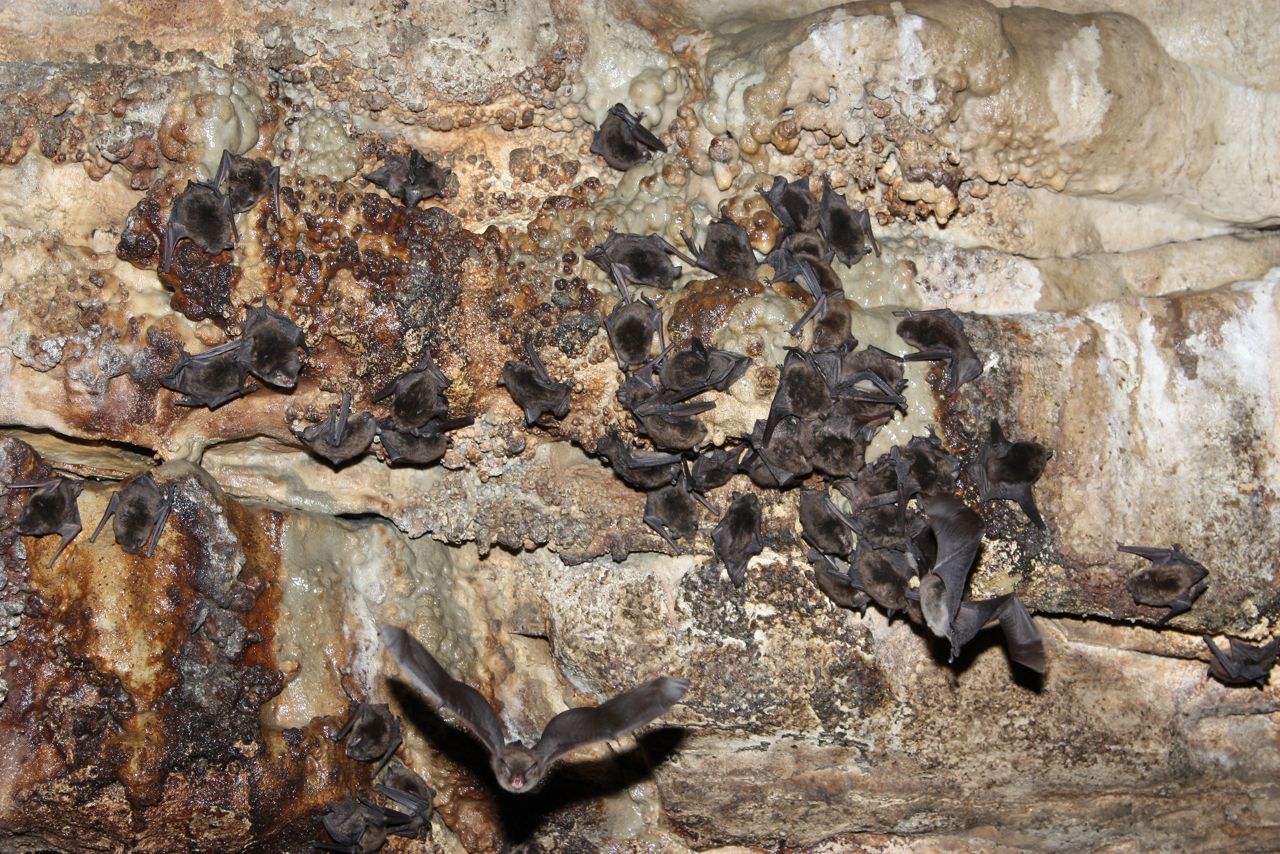While many think of bats as scary creatures, they are natural pest killers for farmers who use them to protect crops from moths, beetles and more — but their populations are at risk.
A fungal disease called white nose syndrome impacts hibernating bats leading to mass mortality in certain species across the United States. The first discovery of it in North America was near Howe Caverns in Schoharie County in 2007, when photographs showed fungus-infected bats dead on the ground.
Recent research published and reported widely connected white nose syndrome in bats to an increase in pesticide use by farmers, but that has been disputed by farmers and experts based in the Northeast consulted for this article.

Bats are the primary consumer of night-flying insects such as moths, beetles and many other species of crop and forest pests.
“There’s a strong connection with what we call ecological services that bats provide in agricultural settings where they will consume the adult forms of these insects and in doing so, reduce the need for farmers to use pesticides,” said Jeremy Coleman, a U.S. Fish and Wildlife Service white nose syndrome coordinator.
Recent research contends that at the same time as a decline in bat populations, counties where the disease has been detected, farmers have increased their use of insecticides by 31.1% on average.
However, experts say it is difficult to determine the exact connection between bats and insect populations.
“Insect populations are boom and bust,” Coleman said. “There are a lot of things that will factor into insect population cycles like climate, rainfall, temperatures at different types of year.”
Dan Wixted, a pesticide educator with Cornell University, said that Integrated Pest Management systems account for the number and density of the pest, the environment of the farm and natural predators.
“A few pests aren’t going to cause much harm, so you want to see that the population is high enough to warrant the cost of applying a pesticide,” Wixted said.
The purpose of this type of approach is to reduce the amount of pesticides needed to help control costs.
Wixted said the research suggesting the increase in pesticide use results in a declining bat population is a correlation rather than a cause-and-effect, as bats are not the only predators of crop pests.
“There are other things killing crop pests like spiders, predation insects and birds. The assumption that the increase insecticide use is because of reduced bat populations, it’s a correlation. We don’t know. It’s possible because we know some bats eat crop pests, but it’s a correlation,” Wixted said.
Spiders, parasitic wasps and ground beetles are all predator species that are currently thriving, Wixted said.
“That’s another reason farmers are careful with pesticides they use because they want to keep those natural predators out there doing the work for them,” he said.
Recent research said infant mortality was higher in counties where bats have tested positive for the disease due to the lower bat population and therefore the increased use of insecticides, but Wixted highlights that the use of these chemicals is heavily regulated.
“By law, if a pesticide is going to be applied to food crops, the EPA has to look at all the data and make sure the amount of pesticides we can be exposed to in our diet on a daily basis is low enough to protect infants and children, and that is under the assumption that the pesticide is used at its high amount allowed,” Wixted said.
Kate Cleary, an environmental science professor at SUNY Potsdam, has focused much of her research on quantifying how much bats impact agriculture.
The ultimate number consumers tend to look for is dollars, but it is difficult to put an amount on how much bats help farmers, Cleary said. However, she references a 2015 study done that helped shape her research.
Researchers Josiah Maine and Justin Boyles set up pairs of 10-by-10-meter enclosures in Illinois cornfields. One would allow bats in and the other would not, but both allowed insects to access the corn plants.

“They found that corn grown in plots where bats were excluded showed 56% more damage from these larvae and 20% higher rates of a fungal infection that the larva carry,” Cleary said.
Cleary’s own research has shown that bat passes jumped when more crop-destroying moths were present.
“When these were flying around, the bats came into the area and were flying around too because there’s a lot of food for them,” Cleary said.
She said this shows they would be able to quantify how bats impact agriculture if they could perform a large enough study.
Daniel Kent, an owner of Kent Family Growers in Lisbon, said they encourage and love to have bats on their farm.
“We have a really happy situation of having two colonies of bats on our farm. The larger colony, they roost in our workshop with a cement apron underneath so every morning we can see how many insects are represented in their manure,” Kent said.
Except for a few summer nights, the little brown bats consume many biting insects, such as mosquitoes and flies, which helps them out as they work outdoors, Kent said.
“We think they’re adorable, interesting, charismatic, delightful in every possible way and marvel at people that find them creepy and unpleasant. They are like cute pets that we live with and not anything to fear,” he said.
Many people don’t realize the impact that bats have on the environment.
“They really do have an important purpose, and we need to conserve them,” Coleman said.



